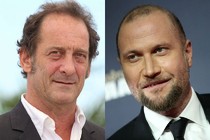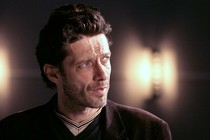CANNES 2009 Closing film / France
Coco & Igor: Passion, tension and art
When two charismatic personalities from the creative world meet, sparks are to be expected, beyond morality and social convention. Such was the passionate relationship between renowned French designer Coco Chanel and the no less famous Russian composer Igor Stravinsky at the start of the 20th century.
This stormy and adulterous affair is filmed with elegance and understatement by Jan Kounen and impressively performed by French actress Anna Mouglalis and Danish star Mads Mikkelsen. Presented before the press at midday today, French/Swiss co-production Coco Chanel & Igor Stravinsky [+see also:
trailer
film profile], the closing film of the 62nd Cannes Film Festival, will tomorrow evening lower the curtain on the Croisette, in a fitting homage to beauty, art and the extraordinary characters of creators.
Scripted by Chris Greenhagh and based on his own novel, the film opens in 1913 with a superb sequence at the Champs-Élysées theatre in Paris. Too avant-gardist for spectators "who only swear by Swan Lake", the ballet Rite of Spring, composed by Stravinsky and choreographed by Nijinsky, sparks an incredible uproar in the audience, among whom is Coco Chanel, a perfect silhouette who moves with icy poise.
Years pass by in a flash of archive images of the Russian Revolution, which forces Stravinsky into exile in Paris with his wife (an outstanding Yelena Morozova) and four children. Living in precarious conditions, the composer is invited by Chanel to stay and work in a magnificent country house in the Paris region “I’m not suggesting that you abandon your family, I want to help you," she tells him.
Passion soon flares beneath the gaze of the wife humiliated by Chanel, who refuses to feel guilty, but understanding of her husband’s art. "He needs to enjoy himself, but don’t touch his music,” she warns Chanel, before leaving the house with their children.
Chanel and Stravinsky’s feelings waver between internalised and released tensions, as the two solitary individuals both fiercely guard their independence and transform their love into a bitter game of chess and power ("You’re not an artist, but a fabric seller"), even if the memory of these stolen moments stays with them for the rest of their lives.
Aesthetically flawless in its set design, costumes and score, Coco Chanel & Igor Stravinsky has a fluid and non-ostentatious directorial style. The story also includes a few brief forays into Chanel’s Paris boutique and Grasse, where she selects her N°5 perfume. Centred on two rather laconic protagonists, the sparse plot makes the most of the characters’ facial expressions and plays perfectly on the idea of the cheated wife, in whose eyes this encounter between two sacred monsters is reflected. And as one of the characters comments, whilst consoling Stravinsky in 1913 after the chaotic Rite of Spring performance: "When a man meets a monster, he shouldn’t fight, but sing."
(Translated from French)
Did you enjoy reading this article? Please subscribe to our newsletter to receive more stories like this directly in your inbox.



















